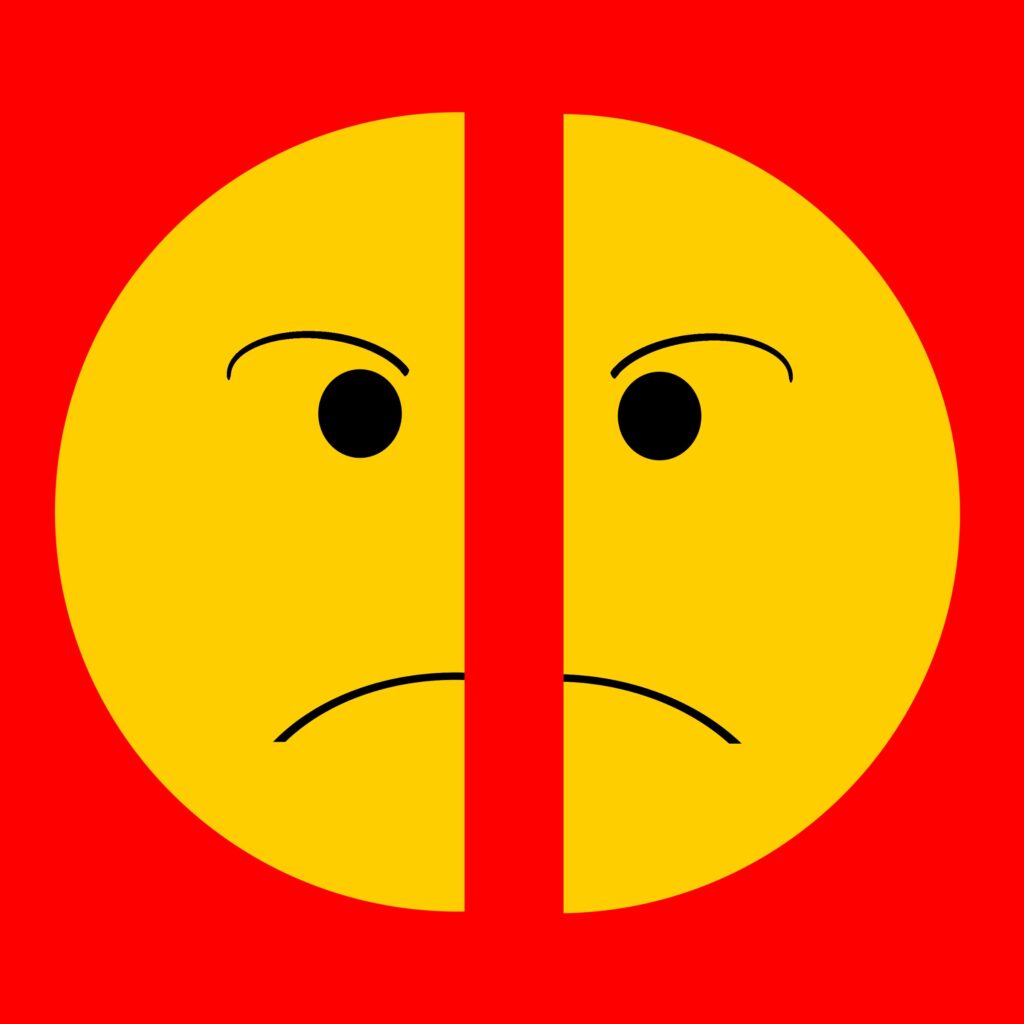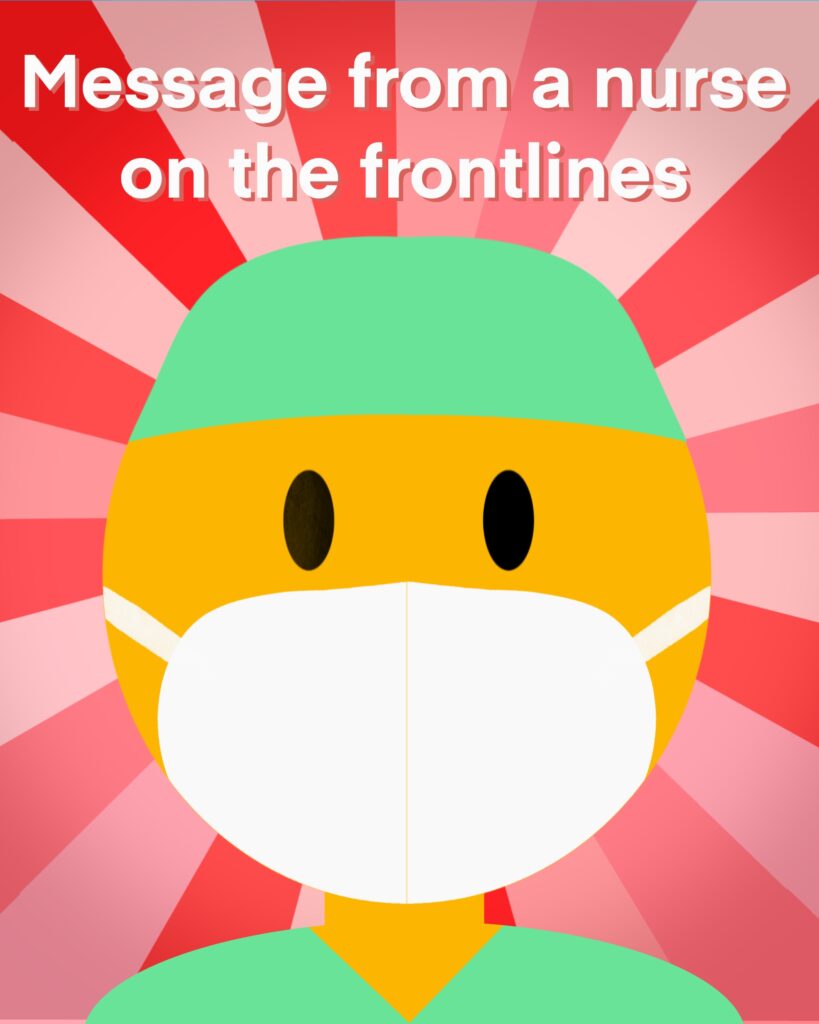
“What makes a dilemma so dilemma-ish is that only one of these two actions can be fully implemented.” Illustration/ Josh Gosfield
The lockdown versus the open-up-the-economy battle is inescapable. It’s being played out in the media, White House press briefings, halls of Congress, statehouses, Facebook and Twitter. The question is which side are you on?
If you’re a salaried, progressive-minded NYC health care worker with a mother in a nursing home, you’re probably a lockdowner, wanting to keep America shutdown till someone invents a vaccine.
But if you’re a Nebraskan owner of a small town diner and a parent to three sports-loving teens who think remote learning is a joke, you’re probably an open-upper, wanting to restart your business and send your kids back to school and sports leagues.
The first step in solving a problem is to define what type of problem it is. The lockdown versus opening-up problem is a classic moral dilemma. The paragon of moral dilemmas is Sophie’s choice. Sent to a concentration camp, Sophie’s confronted by a Nazi official who tells her she can save one—and only one—of her children, her son or her daughter. What’s more, it’s Sophie’s choice to make.
Moral dilemmas such as Sophie’s choice, or the lockdown versus opening-up-America choice, confound us because they scramble our sense of right and wrong. It’s no wonder so many of us are confused. To get a clearer picture of how to think about this problem, let’s break down the three aspects of a moral dilemma.
1. Two good results: A dilemma begins with two good results. Just as Sophie wants to save both her son and her daughter, we want to save lives in a pandemic and we want to return to normal life, sending students back to school and adults back to their jobs.
2. Two separate actions: In a moral dilemma, either of the two good results can be achieved. But only with two opposing actions. Sophie can say, “Save my son.” Or she can say, “Save my daughter.” We can stick with the lockdown option. Or we can choose to open up businesses and schools.article continues after advertisement
3. Each action cancels out the good results of the other action: Just as Sophie can’t choose to save her son and her daughter, we can’t open up the economy and enforce a lockdown at the same time. That’s why a moral dilemma takes a hatchet to your sense of right and wrong. Although the two actions are designed to do good, they cancel out the good results of the opposite action. The lockdown throws people out of work, destroys businesses and ruins education for many. Opening up spreads disease, causes death, and perhaps even sets off a new round of lockdowns.
What about it, Sophie? Your son or your daughter?
What about it, America? The elderly, the sickly, the essential workers, and the city-dwelling minority, or the economically damaged majority?
To make the morally correct choice, it seems that both actions are required. But then again both actions are forbidden. Damned if you do, damned if you don’t.
There’s an even more insidious wrinkle that makes our pandemic dilemma so tricky to solve. There’s no way to be certain about the consequences of either action. Opening up the economy speeds job and education recovery, but what about the spread of disease? There are many models and those models will get better as more hard data is collected, but those models are partially based on assumptions. Since the crafters of each model make their own assumptions, the models often predict different outcomes. Of course, there’s good reason to heed a model that suggests caution. But in the end, we can’t know for sure what will happen to the spread of disease if we open up or to the health of the economy if we stay in lockdown.
When you add the unknown consequences of an action to a moral dilemma, it’s as if you’re Sophie making her choice at the craps table in a casino.
It gets even worse. In the study of moral psychology, experimental results show that people tend to embrace facts that support their moral choices. Why? People want to avoid the guilt they’d feel if their choice causes suffering. That’s why the NYC progressive embraces the most drastic spread-of-disease predictions and downplays the needs of people to return to their jobs. And that’s why the small town business person in an area with few COVID-19 cases searches for news that proves the disease isn’t so deadly, perhaps even that it’s a hoax. It’s a battle of choices fought with chosen facts that may send our country careening toward an exhausting post-pandemic blame game. It would be tragic, if, as a country we ended as damaged as Sophie, who after losing both her daughter, and very likely her son, turned to alcohol and an abusive lover, and eventually took her own life. article continues after advertisement
Perhaps solving this dilemma seems hopeless. But it isn’t. First of all, our choice isn’t as binary as Sophie’s. We can choose some of both. As localities open up, step-by-step, remaining partially shut, yet partially open, we’ll move past theoretical models to see how the economy responds and how quickly the disease spreads. There will be trial and error. As communities experiment with hybrid open-shut tactics, other communities can copy strategies that work, and avoid tactics that fail.
But getting through this pandemic without paying a Sophie-like price to our national psyche will require more than that. It will require a new mindset that embraces ambiguity.
This new mindset will require us to adopt a clear-eyed, unsentimental style of reasoning that we, as idealistic Americans who always want to command the moral high ground, can find very troubling. To get through this pandemic, we must admit that we will have to sacrifice, to a certain degree, one good for another. We have to accept that we can’t save the life of every vulnerable person or save every job, business, and student opportunity.
We have to accept that whatever we choose to do will be partially right and partially wrong. No matter what we decide our hands will be dirty because someone, somewhere will suffer or die. But if we respect the suffering of others, and do our best to make rational decisions based on imperfect data, we can get through this pandemic with our national soul intact.
Follow us on Instagram @Find.Your.Road_for more Stories & Strategies on People & Work. To find out more about what we do, please visit us at SweeneyGosfield.com.
Our story “Sophie’s Choice” first appeared in Psychology Today. You can check out more of our stories in Psychology Today here.

